News
Interview with Alan Sobrino of Errant Press
“Now is the time to take words from boring codex forms and put them everywhere.” Vivian Sming talks Latin American artists’ books with Alan Sobrino.
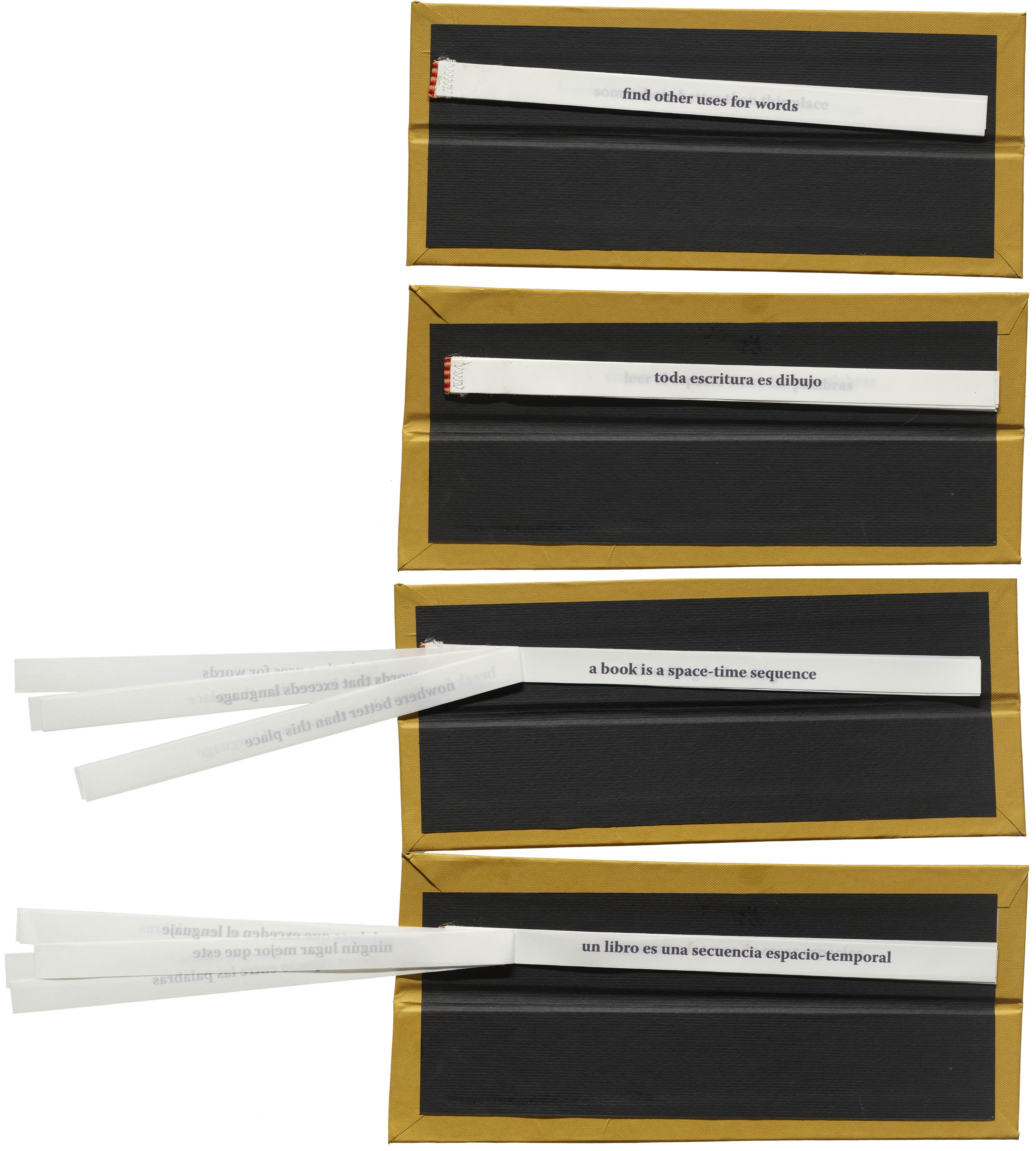
As part of her curatorial fellowship at Letterform Archive, Vivian Sming has been introducing us to innovative book artists and independent publishers. In this installment, she sits down with Alan Sobrino of Errant Press who distributes and publishes books by Latin American artists, often in bilingual editions. All the books shown here are now part of the Archive’s collection of visual language.
Vivian Sming: Can you introduce yourself and tell us what prompted you to start Errant Press?
Alan Sobrino: My name is Alan Sobrino. I’m from Mexico City originally, but I have lived the last 10 years in a city called Culiacán in Sinaloa, Mexico, one of the most violent cities in the world. It’s the hometown of a lot of drug dealers. While I was living there, I started working on Errant Press. I knew that what I was trying to make and what I was writing was never going to be published in the way I wanted them to. If you go to traditional publishing houses with ideas that are outside of the box, like putting some poems in matchbooks or like playing with the containers, well, obviously, they’re going to react. They liked the texts, but I got rejected all the time trying to put them together as a project. After a while, I decided to start doing it myself. My first books didn’t look like the ones I make now. They started as small projects for friends. I shared them with people who I knew would like them. They eventually started growing and becoming more popular between friends and zinesters in Mexico. I decided to create Errant Press as a gateway for putting all these works I was making already out there, and also to make a little bit of money to keep producing. Because I realized that without money, I couldn’t keep publishing my work. I thought Errant would be a good way to make some cash flow so I could keep producing.
VS: When was this?
AS: This was in 2019. When I started working with Errant, I was making a public library in Culiacán—a small collection of artists’ books. I had the chance to meet a lot of people who were making artists’ books in Mexico. After looking at their work and talking to them, I decided that I had to do my own thing too.
VS: Can you tell us a little bit about your own authored books, like Matchbooks and May Frágil? What are some of the themes that come up for you and your work, and what are you hoping to achieve with the book form?
AS: I write a lot of poems, catalog them, and try to gather them into small collections. Matchbooks is a collection of very intense poems. My idea was to try to make fire part of the poetic experience, or the poetic aesthetic, and to make the poem actual fire. This way, we can have a little conversation between the content and the container. I had been doing this with different poems, but the ones that work best were the ones that I put in the matchbook. The idea behind Matchbooks is to play with this poetic element. You can burn up the poem. The fire can become a poetic extension of the words. I also have some other poems that I’ve been trying to put in different objects. I realized that a lot of people that work with conceptual books try to capture and bring art into the book form. But, because I am a writer more than an artist, I try to put stories outside the book form. In a way, it’s the same exercise that all the conceptual artists are making, but in reverse. I put stories in objects rather than art in the book form.
VS: Do you also do the illustrations and design?
AS: No, no, no. I write the book as a whole with the ideas and make the dummies, but I work with a super talented team of designers called Plan Scusi made of international people and based in Mexico City. The illustrations of May Fragile / May Frágil were made by Andrea Vallejo a.k.a @Fugitivasoy.
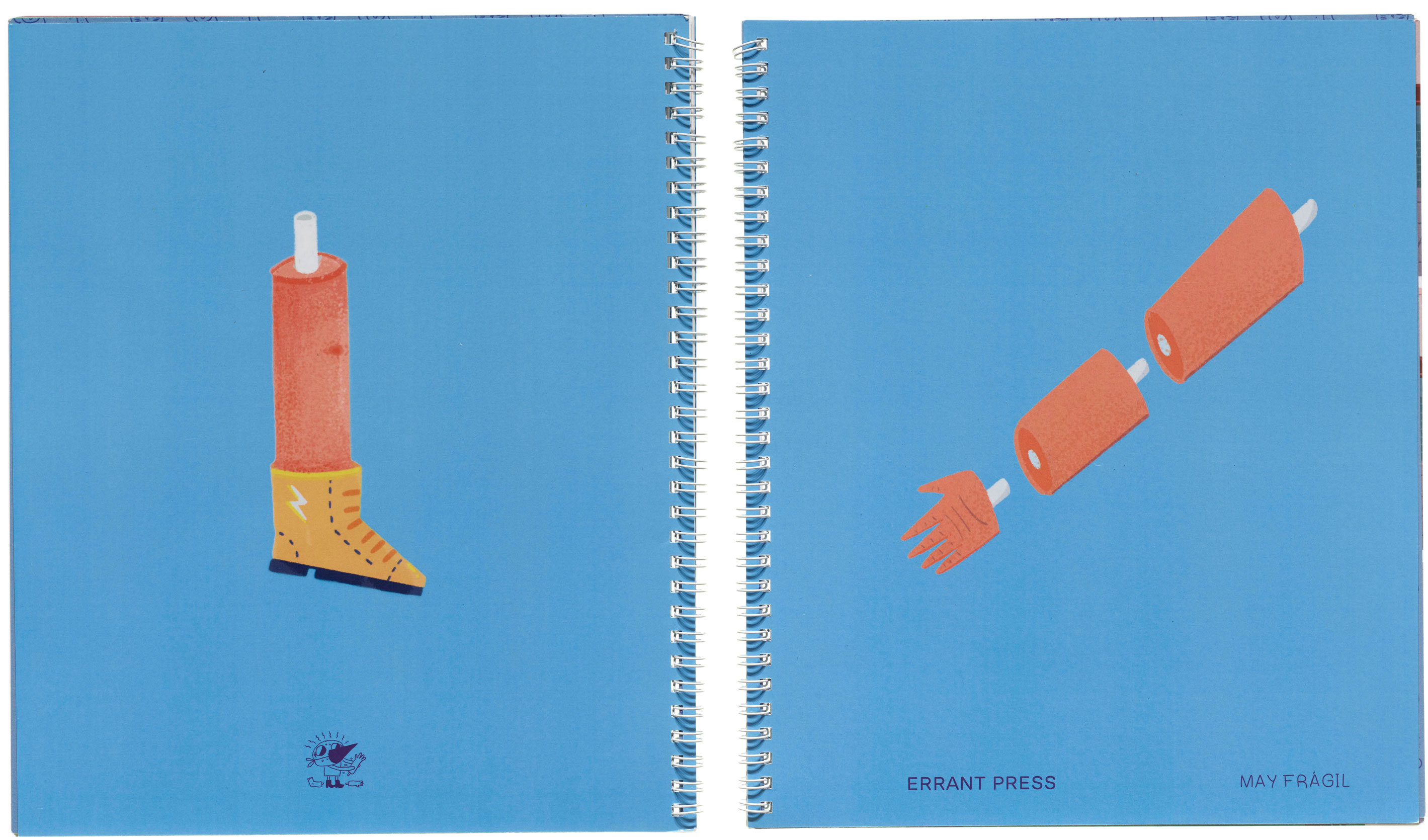
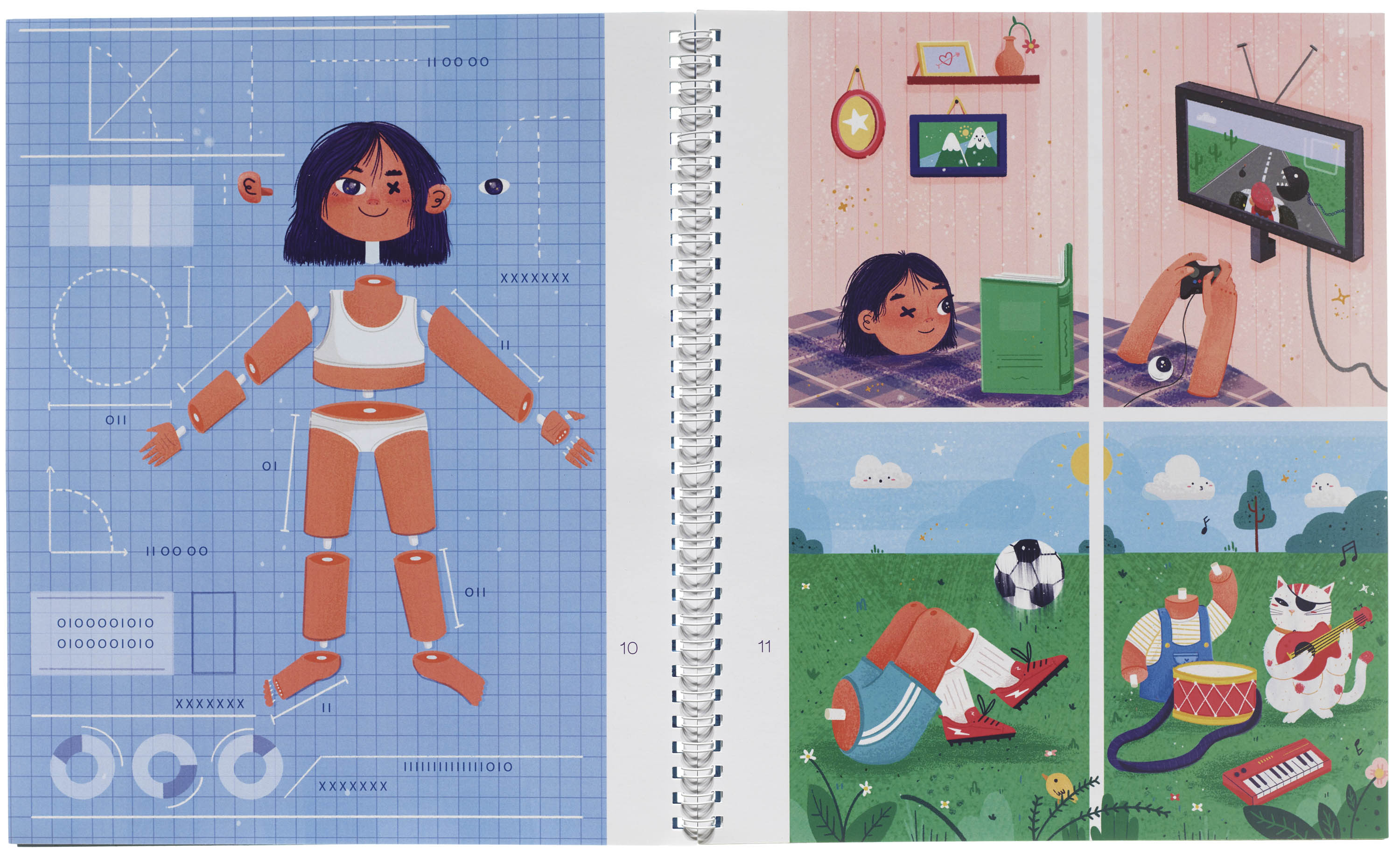
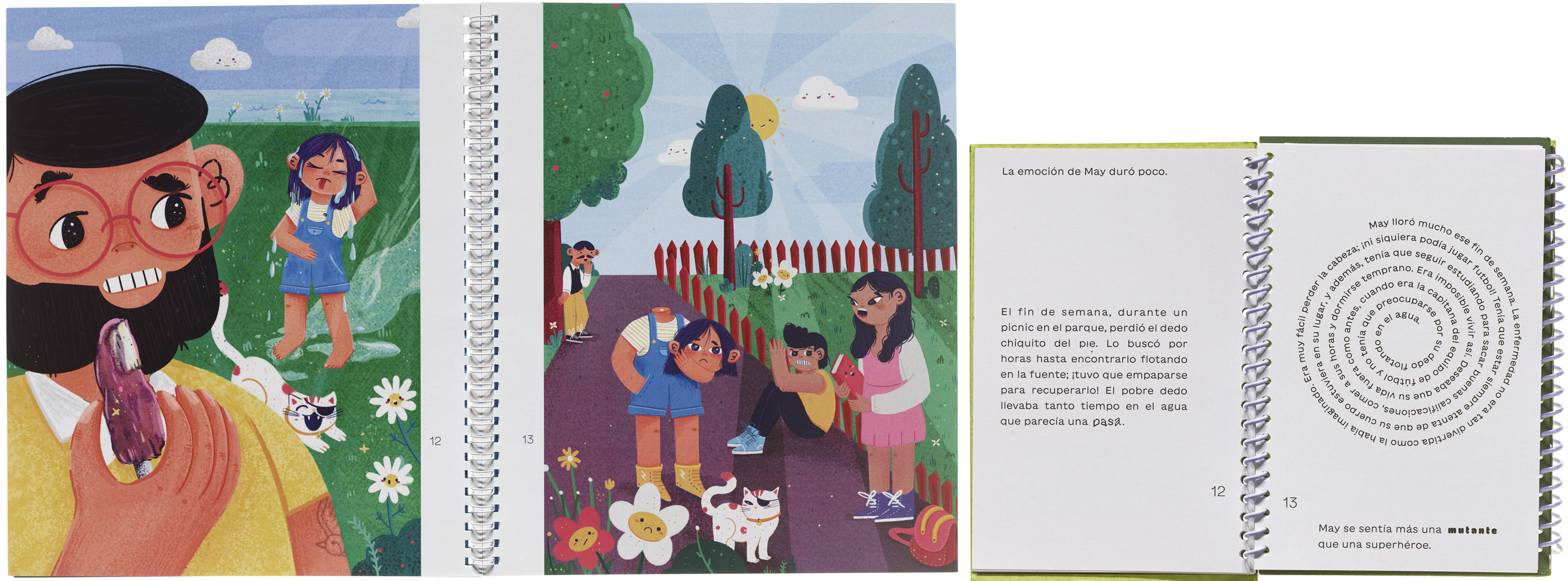
May Fragile is a short story for kids. I was trying to make a different kind of hero, a more human hero for kids to follow. Why do we read? When I was a kid, I used to enter my parents’ room, and I saw them reading. Even though they never gave me money for expensive toys like Nintendo, they never hesitated to give me money for books. I think I read as a part of an imitation process of my parents or some friends or people you admire as a kid. When I was writing May, I was also reading this book about the history of books called Papyrus by Irene Vallejo, who is a super talented writer. I learned that back when libraries first started, people gathered outside the libraries. One person would take a scroll out and read in this public plaza, and other people would hear them because nobody knew how to read. The one who knew how to read read to all the other people.
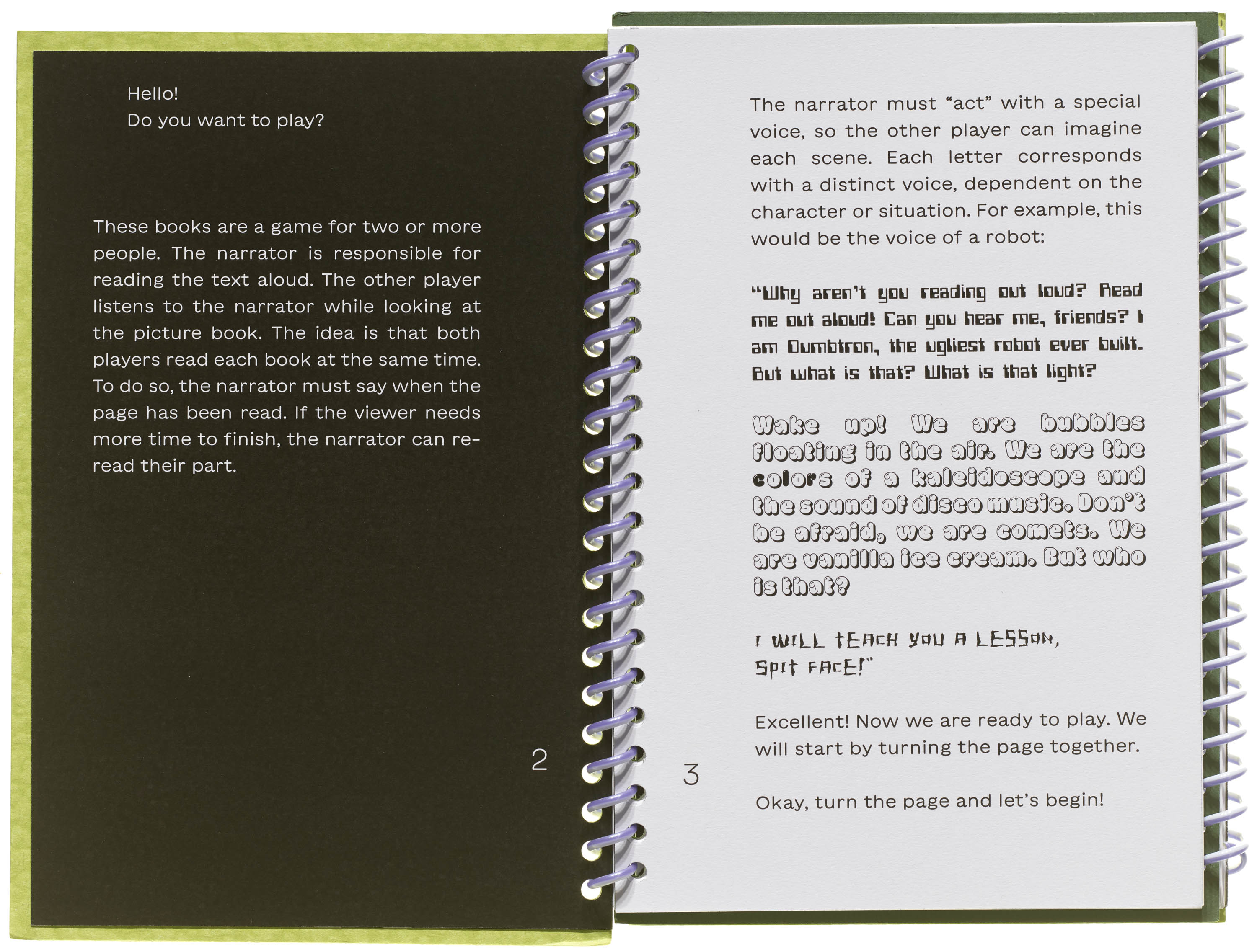

So, for May, I actually took that concept that is very, very old. It’s nothing new, it’s going back to the original practice of reading. I tried to mimic or imitate that dynamic of someone reading and the other one catching up with the story. I did this with an illustration book that goes beside the textbook, so that kids can actually read the images, even though they do not know how to read. They learn how to pass the pages and read the images. I tried to intensify this reading experience, to force this relationship with this dynamic. I also tried to make it fun, using different typography to indicate lines to act out as different voices, as the kids or the doctor in the story. The whole thing is trying to force that dynamic of an adult reading to a kid, hoping this kid will eventually become a reader.
VS: Another part of Errant Press is the distribution of other artists’ work, specifically from Latin America. Can you talk about that aspect of it — that you’re not only self-publishing, but you’re also featuring other self-published works?
AS: Yes, I admire the work of a lot of people from different parts of Latin America. To be honest, the market in all of Latin America is maybe half the size of the market in the U.S. and Canada. So for us, it’s a struggle in Latin America because we all put our own money to make books and it’s very difficult in the short term to get back the money to keep producing. Libraries take out 30% or 40% discounts when they buy wholesale. When you do commissions, well, you wait and pray that someone is going to pay you eventually. This is not the best way to work. I started promoting these artists but paying up front, buying whole editions, and reinvesting the money I make in them. The profit I make, I also reinvest in them so they can make new books. When I make a whole profit out of two or three artists, I include another artist into the platform. I try to choose artists who are creating conceptual books or books outside of the codex or playing with the limits of the books—those are the ones that I am more interested in.
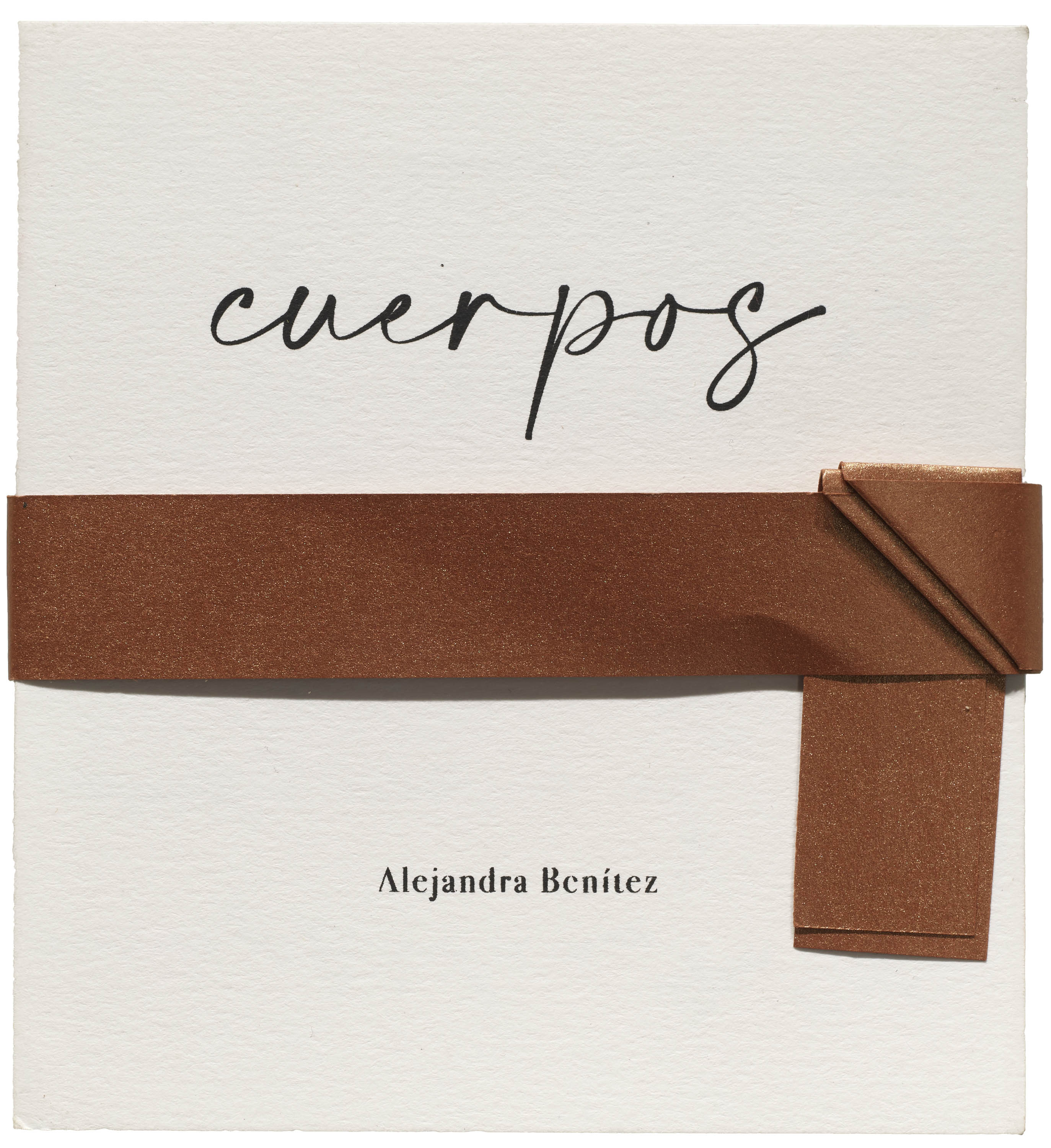
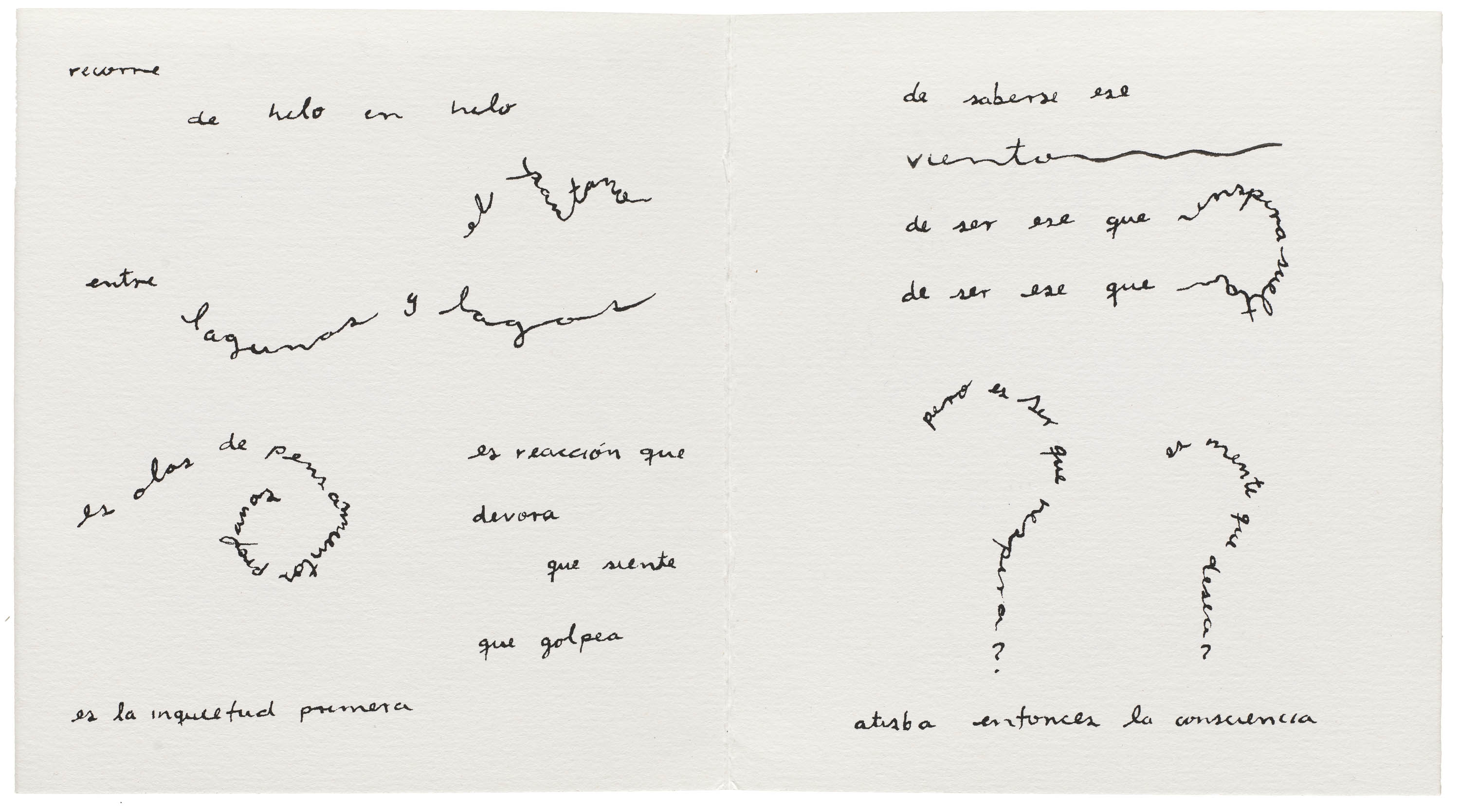
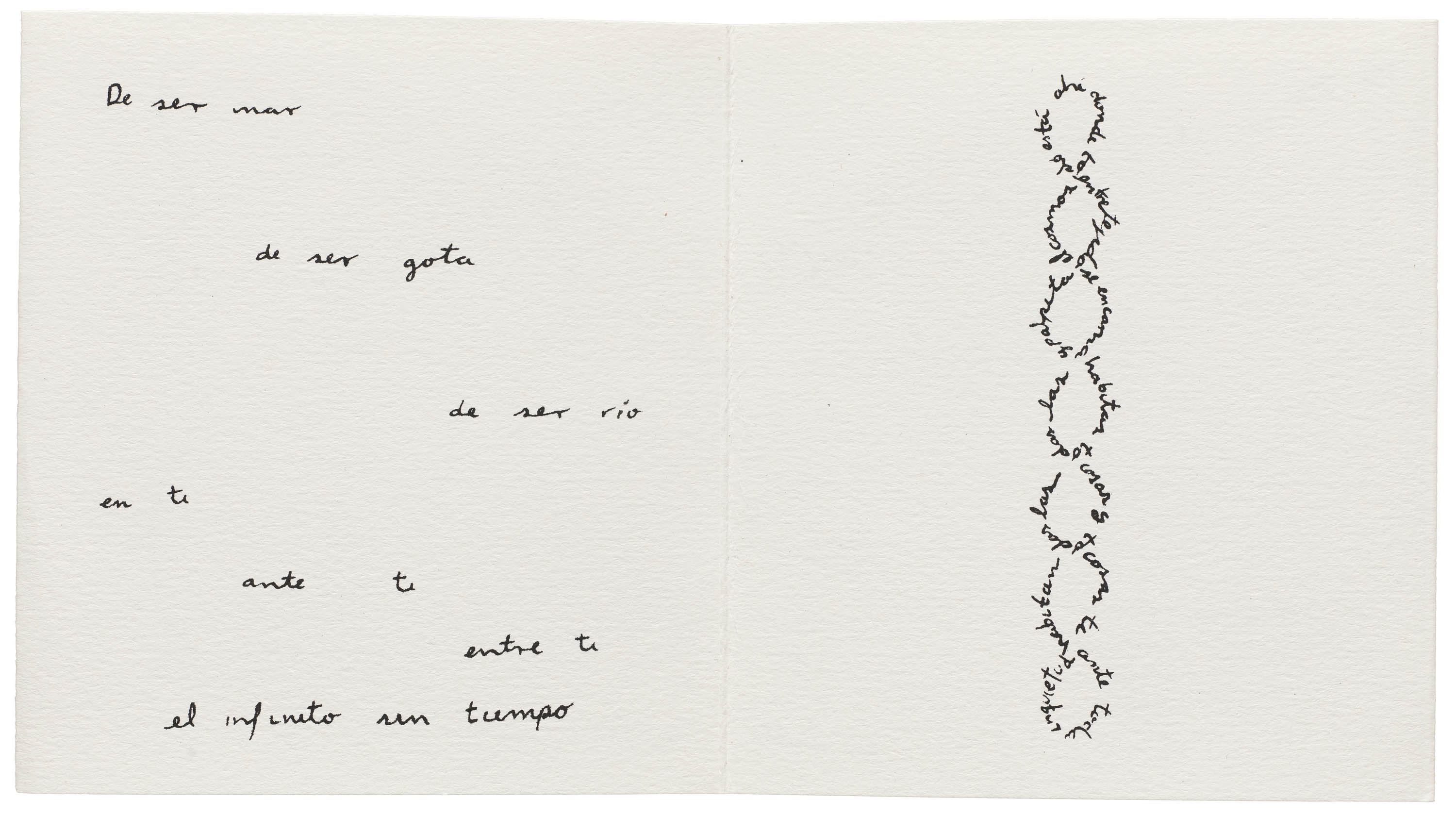
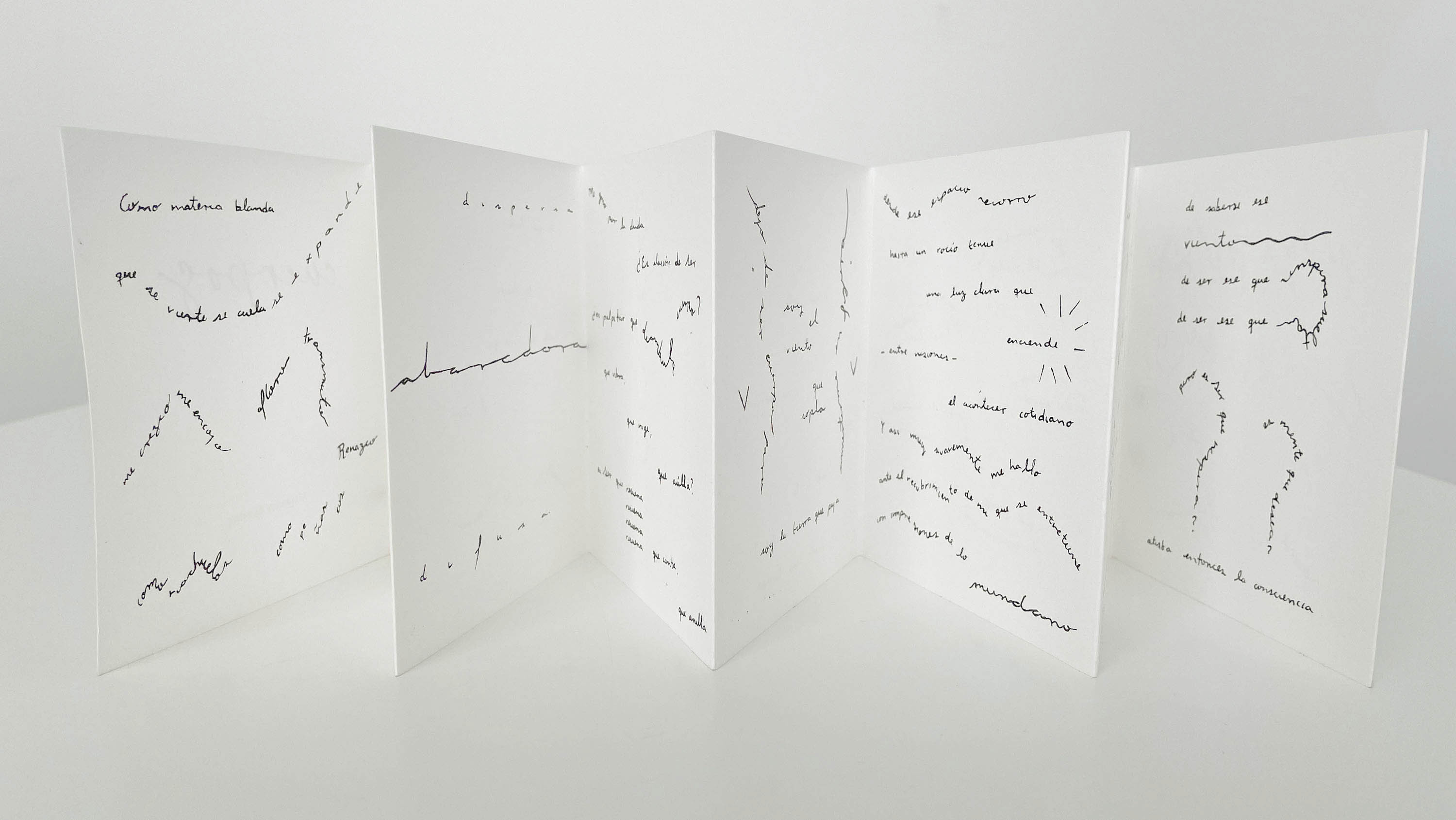
VS: I’m curious to hear your thoughts about a lot of your books being bilingual. What happens when you put those two languages (Spanish and English) side-by-side with one another? Is that something that’s more of a practicality? Or do you feel like there’s something that opens up with that juxtaposition?
AS: One of the main objectives of creating bilingual books is shortening the borders between the work of these artists and myself with their audiences, to grow their audiences. It’s difficult because some stuff is untranslatable, especially when you use slang. I use a lot of Mexican slang in my poems, and you lose some of it in their translation. This is maybe why I try to create books that speak as a whole, not only as text. People can actually interact with the book in different layers, not only the word layers, but also the object layer or the space-time layer that constitutes a book. So even though it’s difficult, it helps me reach broader audiences. I encourage all of my other artists to do the same. Sometimes we share the same translator. We all try to share these resources. Using the same translator helps us keep the same voice, in English at least.
VS: In talking about the many layers of the book, one piece I found really interesting from your selection is Conversar en forma de libro 02, which is described as a “collection of objects that inhabit a book like parasites.” Can you talk a little more about that collection and that idea of parasitic material inside books?
AS: Yes, I love that. Alfonso Santiago is responsible for that collection. I met him in Mexico last year or two years ago. I thought his work was so simple and so brilliant. If you start questioning, “What is a book?” that is one of the most difficult questions I’ve encountered in my life. I do not have an answer. But this work by Alfonso is a great exploration of this question. So what is a book? A book is a sequence of information in space and time. Alfonso plays a lot with this idea, which is originally by Ulises Carrión, the Mexican conceptual artist. Alfonso created different objects you would commonly find in a book, so you can parasite a book and create a new book. This may not be the book you’re expecting. This is more like an art piece than a book. I love the idea of how you can intervene while already creating a completely different new thing. Conversar en forma de libro means “talking in book form,” and it is filled with these objects you usually find in an old book, like a postcard, bookmark, one of those typography measurements, and use them to parasite a book. When I saw that, I thought it was brilliant and I love that he keeps exploring and playing with that idea because he’s taking it farther and farther with each of his books.
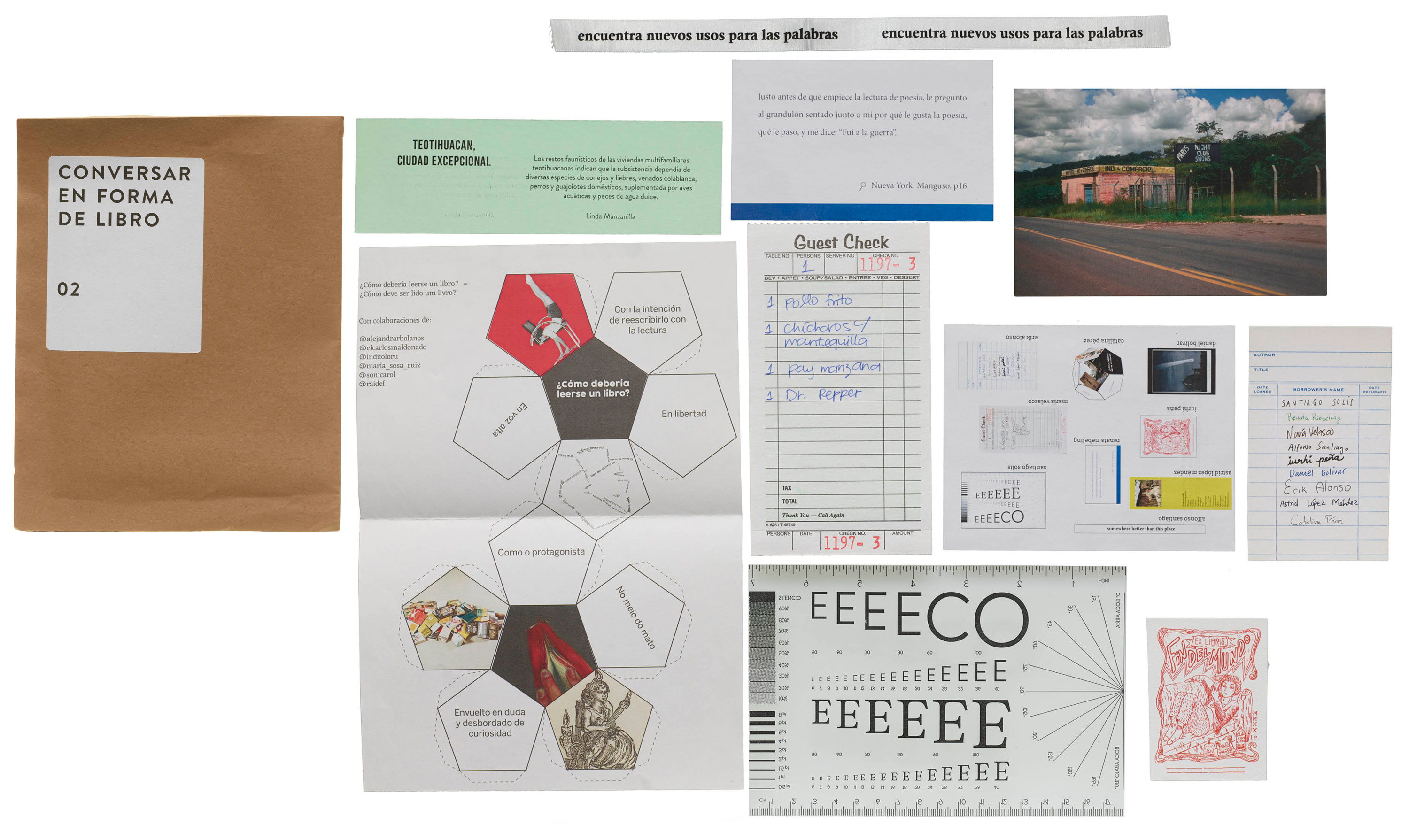
VS: I have to ask this question because here in the States, we often take for granted the freedom to self-publish without government control or regulation. Are there areas in Latin America where the government asserts more control in publishing?
AS: Yes and no. The government in Latin America doesn’t care about books; they don’t read. So they’re never going put their eyes on anyone who’s making books because what’s worrying them are truly difficult issues, such as a lot of violence. It’s not a threat or a menace to them. But still, I sell one newspaper called Breakfast made by Kobayashi Books. Newsprint paper in Mexico is only sold by the government and if they don’t like what you’re doing, they will not sell to you. So, you have to buy the paper for an extra price overseas, in the States, or in Guatemala just to print this. In some ways, they don’t care what you’re going to publish, but in some other ways, they do control what is going out there. I’m very happy to see a movement of anti-copyright and anti-ISBN movement growing exponentially in Latin America. I think that part is easier in Latin America because no one is going to sue you over this. There’s more freedom to play with copyright.
I’m working on a project that is being printed right now. It’s a passport that allows you to choose your name, your gender, and only gives you one option of birthplace, which is planet Earth. Books are outside of borders. For me, it’s very important that books bring down borders. With all these ideas of trying to bring Latin American books here and struggling and dealing with language — with all of that, I eventually realized that we don’t have that many cultural differences. I have more differences with some of my neighbors in Mexico than some of my neighbors here in the States. After I realized that, I started working with this passport. It’s been criticized because it’s actually illegal to carry two passports. At the same time, for me, it’s very important to try to explore or fight these ideas through books. It’s the result of all of this: the double language, the border, the market size, everything. I try to think that there are no two places, it’s just the same place. We are the ones that make two different places. I’m talking specifically about North America and South America.
VS: People tend to think of the internet as the tool to erase borders, in some sense. That was maybe the hope of it, and not the reality. How do you see the internet’s role in publishing, and in making shared connections possible?
AS: I try to make the most out of it. One of the artists I work with is from Argentina — Catalina Kobelt. Another one, Karla Barracuda, is from Peru, and the other ones are from Mexico. I know that without Instagram or social media, we wouldn’t have met. The editing process is always back and forth, and it would be impossible to make it happen without email. I have a really good friend who always says, “A rock is a rock. You can put it over your papers, or you can kill someone with it.” I think this is the same with the internet. It’s a super powerful tool, I’m very happy that I can use it to work with people overseas or in a different country in real time and actually create a relationship without seeing each other, just like we’re doing right now. But at the same time, I feel censorship. The difficult parts of the internet are also growing at the same time. So you have to choose wisely how you are going to use this rock.
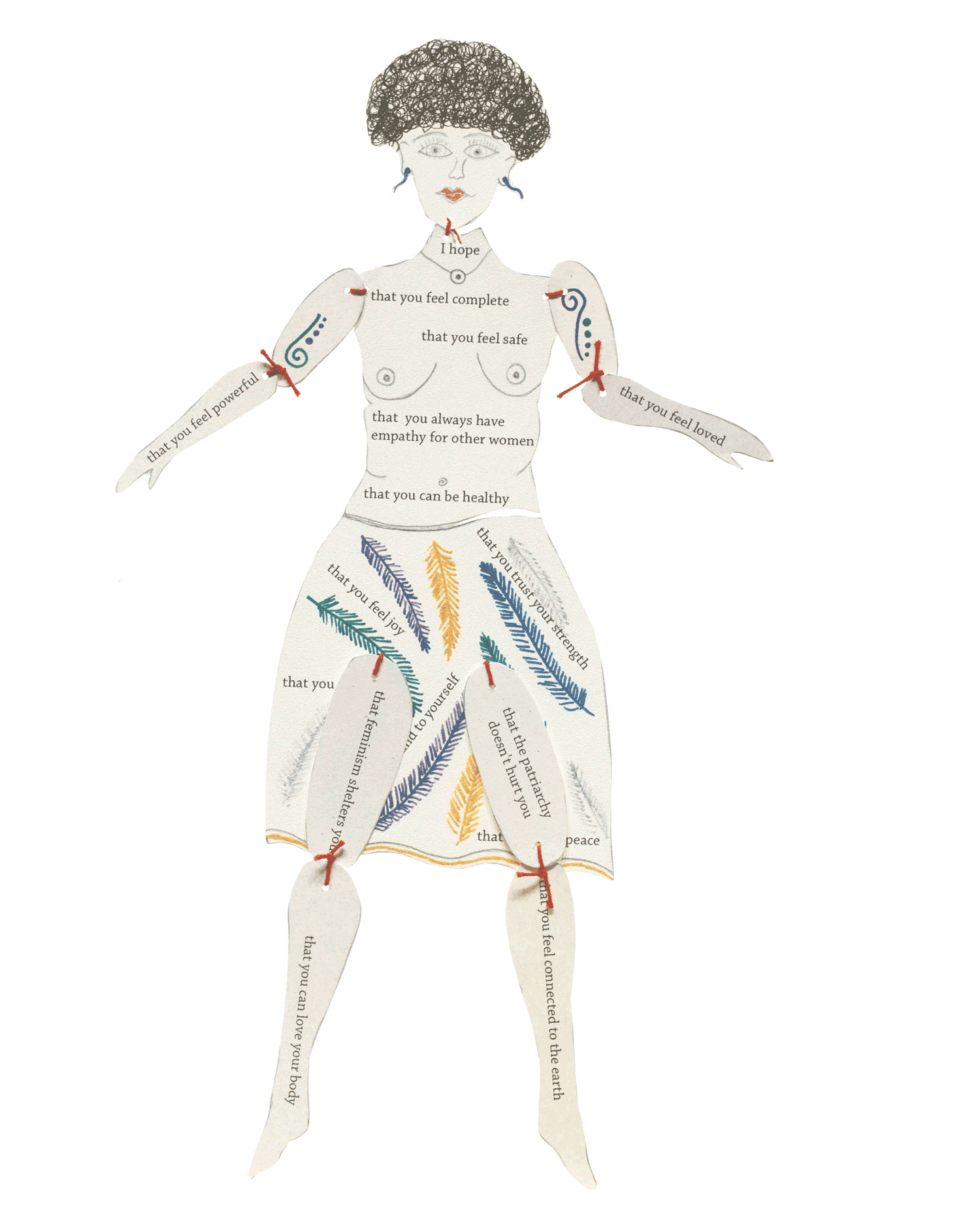
VS: And its impact on the book form?
AS: Well, I think the internet killed the book as we knew it — the codex form of the book. It’s so easy to get a book now that I think codex books are doomed to subsisting. That’s why I try to create objects and things that transcend this thing that you can get anywhere. I try to make meaningful things that can be part of your life, instead of just being this boring PDF or boring square of texts that can be downloaded anytime anywhere. I really like that now knowledge is free and in the reach of everyone’s hand. At the same time, it makes me wonder what’s going to happen with books. I think they’re going to disappear eventually and just become PDFs that you can print wherever or read on a Kindle or ebook. But this opens a new door. How can we make books that resist this digitalization of all books?
I follow Italian designer Bruno Munari. I subscribe to him when I say you have to make meaningful objects and meaningful pieces of art in everything, in everything. Like why not think about a book couch, or a book chair, or a book light, or a book pool, or whatever? Now is the opportunity to take words from boring codex forms and put them everywhere.
